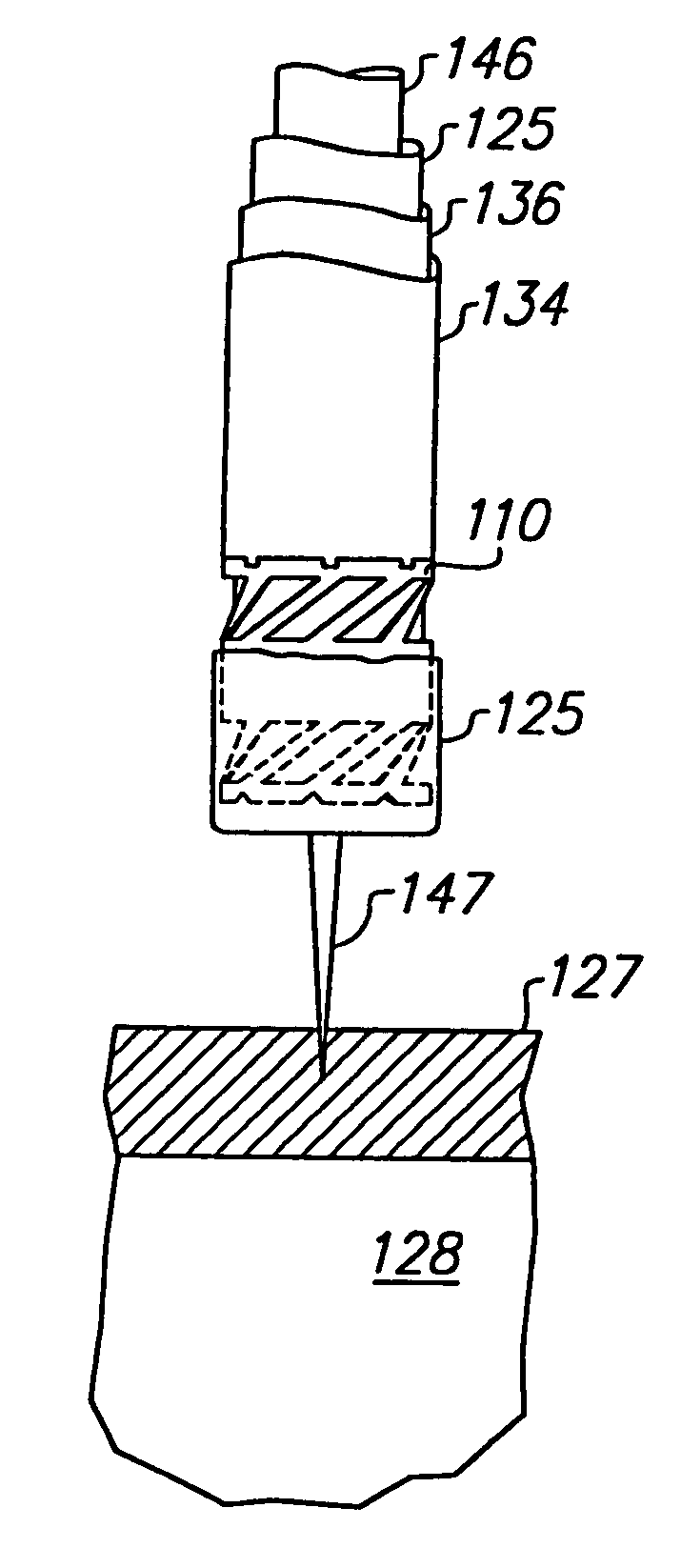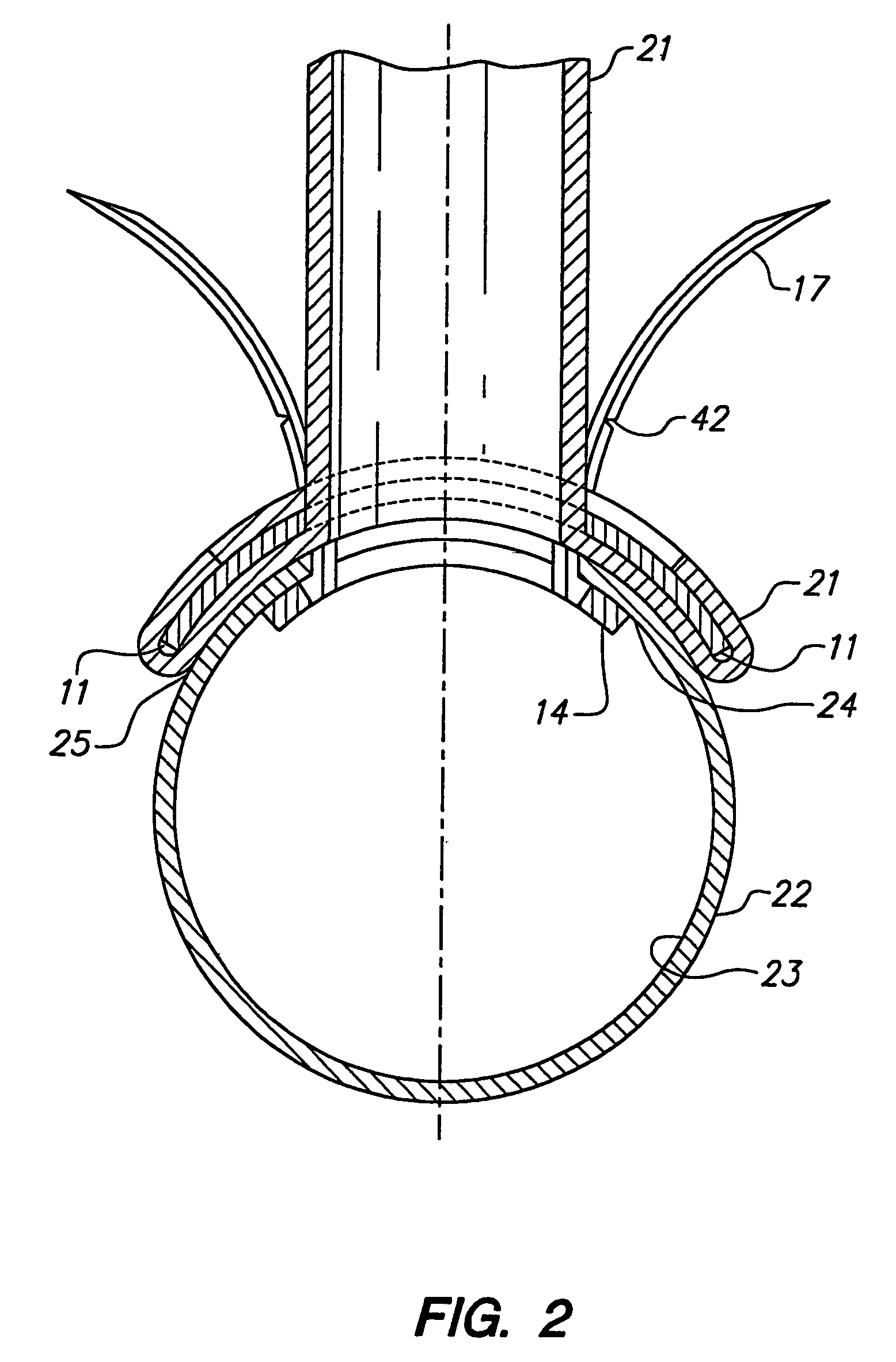Method and system for attaching a graft to a blood vessel
a graft and target vessel technology, applied in the field of vascular anastomosis devices and methods, can solve the problems of reducing affecting the survival rate of patients, and requiring a high level of surgical skill, so as to minimize thrombosis or restenosis, the effect of very rapid operation
- Summary
- Abstract
- Description
- Claims
- Application Information
AI Technical Summary
Benefits of technology
Problems solved by technology
Method used
Image
Examples
Embodiment Construction
[0056]A presently preferred embodiment of the small vessel stent 10 of the invention, for connecting one end of a graft vessel to a small target vessel, is illustrated in FIG. 1. The small vessel stent 10 comprises an outer flange 11 having a body 12 which defines an opening 13 configured to receive the end of the graft vessel 21, and an inner flange 14 having a body 15 which defines an opening 16. The inner flange is configured to be connected to the outer flange, with the openings 13, 16 at least in part aligned. In the embodiment illustrated in FIG. 1, prongs 17 on the inner flange are configured to be received within small openings 18 in the outer flange, to thereby connect the flanges together. As best illustrated in FIG. 2, showing a transverse cross section of the small vessel stent 10 shown in FIG. 1, taken along lines 2—2, the inner flange 14 is configured to be positioned within a lumen 23 of the target vessel 22 against an inner surface 24 of the target vessel, and the ou...
PUM
 Login to View More
Login to View More Abstract
Description
Claims
Application Information
 Login to View More
Login to View More - R&D
- Intellectual Property
- Life Sciences
- Materials
- Tech Scout
- Unparalleled Data Quality
- Higher Quality Content
- 60% Fewer Hallucinations
Browse by: Latest US Patents, China's latest patents, Technical Efficacy Thesaurus, Application Domain, Technology Topic, Popular Technical Reports.
© 2025 PatSnap. All rights reserved.Legal|Privacy policy|Modern Slavery Act Transparency Statement|Sitemap|About US| Contact US: help@patsnap.com



